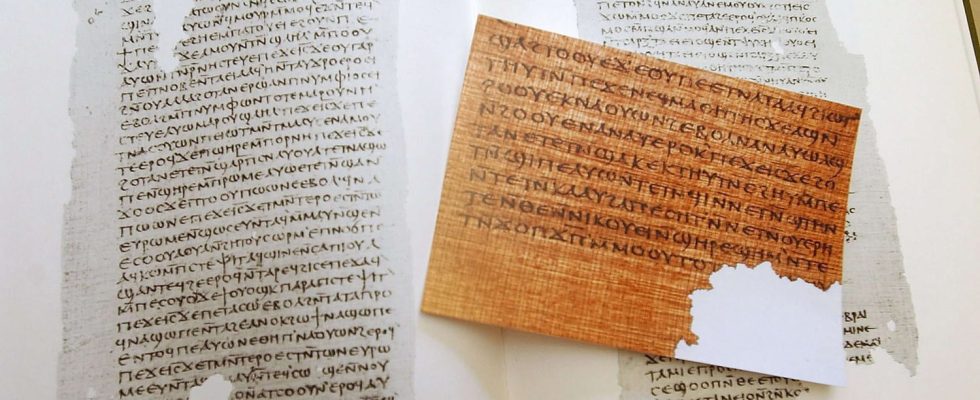A very recent archaeological discovery could shake up what we know about the Bible.
The Bible, sacred text of the Christian religion, was developed over several centuries, between the Old Testament, compilation of sacred texts of the Jewish profession, and the New, account of the life of Christ, which consists of the Gospels, letters of the apostles and of the Apocalypse. It is the result of numerous assemblies and long and meticulous selection work. According to researchers, the current version was written between 1200 BC and the end of the first century AD.
The religious texts are therefore very numerous and not all of them are part of the biblical “canon”, that is to say the “canonical” texts, recognized as the oldest and therefore as references since the 4th century (and in particular since 1546 and the Council of Trent). The other so-called “apocryphal” texts are considered more marginal or even doubtful. But the recent discovery of a papyrus dating from the end of the 2nd century AD could well call everything into question.
This 10 cm long piece of parchment was found in 1897 by British researchers in the ancient Greek village of Oxyrhynchus, located near Cairo, Egypt. It was among hundreds of similar papyrus fragments, as Marine Benoît, the magazine’s archeology expert, recently explained Science and Future. At the University of Oxford, every little piece of parchment has been the subject of study and the papyrus in question, covered with writings in ancient Greek, has only just been examined.
And according to analyses, this “apocryphal” papyrus actually turned out to be as old if not older than the so-called “canonical” texts. It may even be one of the oldest excerpts from the Gospel to date, as old or older than the papyrus “P52”, a fragment of chapter 18 of the Gospel according to Saint John, known as the oldest excerpt from the New Testament ! Enough to call into question the ancestral distinction between the canonical and apocryphal elements of the Church and reconsider many other writings…
The text of the mysterious papyrus relates the Sermon on the Mount, already recounted by Matthew and Luke: “Look at the birds of the air: they neither sow nor reap, they gather nothing into barns, and your heavenly Father feeds them. Aren’t you worth much more than them?” This message from Jesus is well known: the prophet invites humans not to worry – “Each day is enough for its trouble” – and not to amass wealth. But in the papyrus found, the sentences are not the same as in the gospels of Luke or Matthew. Above all, he insists on the fact for men to refuse wealth… An explicit message which until then only existed in another writing… apocryphal, that of Thomas. Another major challenge.
